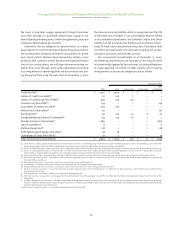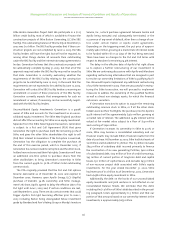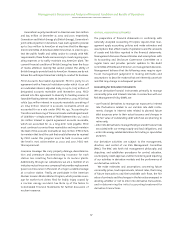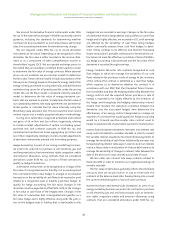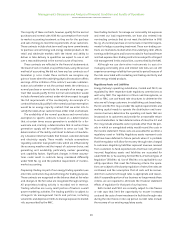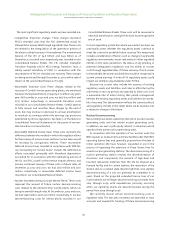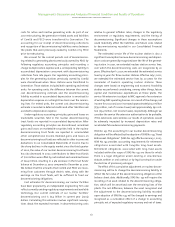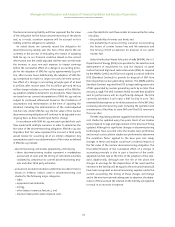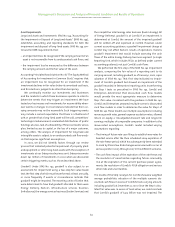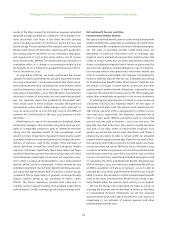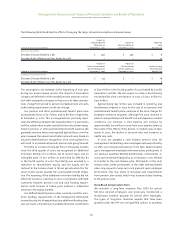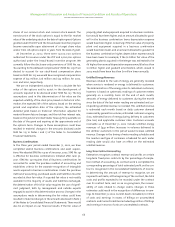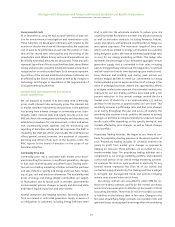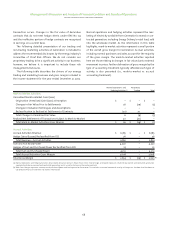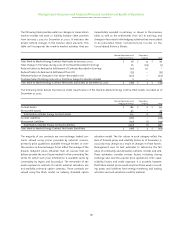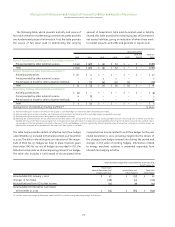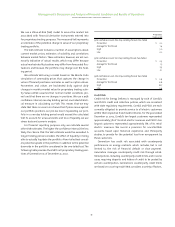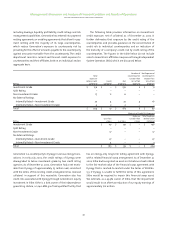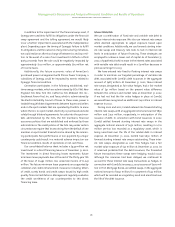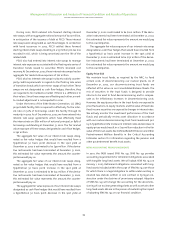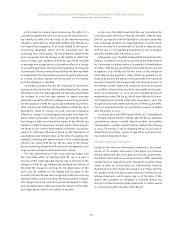ComEd 2002 Annual Report Download - page 67
Download and view the complete annual report
Please find page 67 of the 2002 ComEd annual report below. You can navigate through the pages in the report by either clicking on the pages listed below, or by using the keyword search tool below to find specific information within the annual report.
65
The assumptions are reviewed at the beginning of each year
during our annual review process. The impact of assumption
changes are reflected in the recorded pension amounts consis-
tent with assumption changes as they occur. As these assump-
tions change from period to period, recorded pension amounts
and funding requirements could also change.
Our pension and other postretirement benefit plans have
unrecognized losses of $2.1 billion and $0.8 billion, respectively,
at December 31, 2002. This unrecognized loss primarily repre-
sents the difference between the expected return on plan assets
and the actual return on plan assets that has not yet been recog-
nized in pension or other postretirement benefit expense. We
generally amortize these unrecognized (gains)/losses over five
years;however, the annual amortization amounts vary based on
actuarial determinations. Recognition of an unrecognized loss
will result in increased net periodic pension cost going forward.
Primarily as a result of sharp declines in the equity markets
since the third quarter of 2000, we recognized an additional
minimum liability of $1.0 billion, net of income taxes, and an
intangible asset of $211 million as prescribed by SFAS No. 87
in the fourth quarter of 2002. The liability was recorded as a
reduction to shareholders’ equity, and the equity will be
restored to the balance sheet in future periods when the fair
value of plan assets exceeds the accumulated benefit obliga-
tion.The recording of this additional minimum liability did not
affect net income or cash flow in 2002 or compliance with debt
covenants; however, pension cost and cash funding require-
ments could increase in future years without a substantial
recovery in the equity markets.
Our defined benefit pension plans currently meet the mini-
mum funding requirements of the Employment Retirement
Income Security Act of 1974 without any additional funding;how-
ever,we made a discretionary tax-deductible plan contribution
of $150 million in the fourth quarter of 2002 funded by ComEd,
Generation and BSC. We also expect to make a discretionary
tax-deductible plan contribution in 2003 of $300 million to
$350 million.
Approximately $93 million was included in operating and
maintenance expense in 2002 for the cost of our pension and
postretirement benefit plans, exclusive of the 2002 charges for
employee severance programs. Although the 2003 increase in
pension and postretirement benefit cost will depend on market
conditions, our estimate is that expense will increase by
approximately $125 million in 2003 from 2002 expense levels as
the result of the effects of the decline in market value of plan
assets in 2002, the decline in discount rate and increases in
health care costs.
In 2001, we adopted a cash balance pension plan. All
management and electing union employees who were hired by
us after 2001 became participants in the plan. Approximately
4,700 management employees who were active participants in
our previous qualified defined benefit plans at December 31,
2000 and remained employed by us on January 1, 2002 elected
to transfer to the cash balance plan. Participants in the cash
balance plan, unlike participants in the other defined benefit
plans, may request a lump-sum cash payment upon employee
termination. This may result in increased cash requirements
from pension plan assets, which may increase future funding
to the pension plan.
Stock-Based Compensation Plans
We maintain a Long-Term Incentive Plan (LTIP) for certain
full-time salaried employees and previously maintained a
broad-based incentive program for certain other employees.
The types of long-term incentive awards that have been
granted under the LTIP are non-qualified options to purchase
Management’s Discussion and Analysis of Financial Condition and Results of Operations
exelon corporation and subsidiary companies
The following table illustrates the effect of changing the major actuarial assumptions discussed above:
Impact on
Projected Benefit Impact on Impact on
Obligation at Pension Liability at 2003
Change in Actuarial Assumption December 31, 2002 December 31, 2002 Pension Cost
Pension Benefits
Decrease Discount Rate by 0.5% $ 336 $ 336 $ 8
Decrease Rate of Return on Plan Assets by 0.5% – – 32
Impact on Impact on
Other Postretirement Postretirement Impact on 2003
Benefit Obligation at Benefit Liability at Postretirement
Change in Actuarial Assumption December 31, 2002 December 31, 2002 Benefit Cost
Postretirement Benefits
Decrease Discount Rate by 0.5% $ 152 $ – $ 18
Decrease Rate of Return on Plan Assets by 0.5% – – 6


